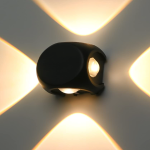The history of Italian chandeliers is a rich tapestry woven with threads of artistry, culture, and innovation. Originating in the medieval period, chandeliers were initially simple wooden structures adorned with candles, serving both functional and decorative purposes. As the Renaissance blossomed in the 15th century, so too did the craftsmanship associated with lighting fixtures.
Artisans began to experiment with glass, particularly in regions like Murano, where the art of glassblowing reached new heights. This period marked a significant evolution in chandelier lookinhome design, as intricate glass elements were incorporated, transforming these fixtures into stunning works of art that reflected the opulence of the era. By the 17th and 18th centuries, Italian chandeliers had become synonymous with luxury and sophistication.
The Baroque and Rococo styles dominated this period, characterized by elaborate designs featuring ornate details, gilded finishes, and an abundance of crystals. These chandeliers were often commissioned for grand palaces and churches, where they served as focal points in lavish interiors. The craftsmanship involved in creating these masterpieces was nothing short of extraordinary; artisans would spend countless hours hand-blowing glass, cutting crystals, and assembling intricate metal frameworks.
The legacy of these early chandeliers continues to influence contemporary designs, as modern artisans draw inspiration from the elegance and grandeur of their historical predecessors.
The Art of Making Italian Chandeliers: Traditional Techniques and Modern Innovations
Time-Honored Techniques
Artisans employ time-honored techniques passed down through generations, such as glassblowing and hand-cutting, to create the individual components of the chandelier. Each piece is crafted with precision, ensuring that it meets the high standards associated with Italian lighting design.
Materials of Excellence
Murano glass is renowned for its clarity and brilliance, making it a preferred choice for chandelier makers who wish to achieve a luminous effect. The use of high-quality materials is essential in creating a truly exceptional Italian chandelier.
Innovative Design
In recent years, advancements in technology have allowed artisans to incorporate modern innovations into their designs without sacrificing the integrity of traditional methods. For example, LED lighting has become increasingly popular in chandelier design, offering energy efficiency while enhancing the visual appeal of the fixture. Additionally, computer-aided design (CAD) software enables artisans to experiment with new shapes and configurations that were previously difficult to achieve by hand. This fusion of old and new not only preserves the artistry of Italian chandeliers but also ensures that they remain relevant in contemporary interiors.
The Timeless Appeal of Italian Chandeliers: From Renaissance Palaces to Modern Homes
Italian chandeliers possess a timeless allure that transcends architectural styles and interior design trends. Their ability to adapt to various settings—from opulent Renaissance palaces to minimalist modern homes—demonstrates their versatility and enduring appeal. In historical contexts, these chandeliers were often the centerpiece of grand ballrooms or dining halls, illuminating lavish gatherings and celebrations.
The interplay of light and shadow created by their intricate designs added an air of drama and sophistication to these spaces. In contemporary settings, Italian chandeliers continue to captivate homeowners and designers alike. Their elegant forms can complement a wide range of aesthetics, from traditional to eclectic.
For instance, a classic crystal chandelier can enhance the grandeur of a formal dining room, while a sleek, modern design can serve as a striking focal point in a minimalist living space. This adaptability is a testament to the timeless nature of Italian chandeliers; they are not merely decorative elements but rather statements of style that elevate any environment.
Choosing the Perfect Italian Chandelier for Your Space: Tips and Considerations
Selecting the ideal Italian chandelier for your space involves careful consideration of several factors to ensure harmony between the fixture and its surroundings. First and foremost, one must assess the scale of the room. A large chandelier can serve as a dramatic focal point in a spacious foyer or dining area, while smaller designs may be more appropriate for intimate settings such as bedrooms or cozy nooks.
It is essential to strike a balance between the size of the chandelier and the dimensions of the room to avoid overwhelming or underwhelming the space. Another critical aspect to consider is the style and color palette of your interior design. Italian chandeliers come in a myriad of styles—from ornate Baroque designs adorned with crystals to sleek modern interpretations featuring clean lines and minimal embellishments.
When choosing a chandelier, it is vital to select one that complements your existing decor while also reflecting your personal taste. Additionally, consider the type of lighting you desire; warm ambient lighting can create a cozy atmosphere, while brighter task lighting may be more suitable for functional spaces like kitchens or work areas.
Italian Chandeliers as a Symbol of Luxury and Sophistication: Adding Elegance to Any Room
Italian chandeliers have long been regarded as symbols of luxury and sophistication, embodying a sense of refinement that elevates any room they inhabit. Their presence can transform an ordinary space into an extraordinary one, imbuing it with an air of elegance that is hard to replicate with other lighting fixtures. The intricate craftsmanship and attention to detail found in Italian chandeliers speak volumes about their quality; they are not merely functional objects but rather artistic expressions that enhance the overall aesthetic of a home.
Incorporating an Italian chandelier into your decor can also serve as a conversation starter, inviting guests to admire its beauty and craftsmanship. Whether hung in a grand entryway or above a dining table, these fixtures command attention and admiration. Their ability to reflect light creates a captivating ambiance that can set the mood for any occasion—be it an intimate dinner party or a festive celebration.
As such, an Italian chandelier is more than just a source of illumination; it is an investment in style and sophistication that adds value to your living space.
Maintaining and Caring for Your Italian Chandelier: Preserving its Beauty for Generations
Cleaning Your Chandelier
Regular cleaning is crucial to prevent dust and grime from dulling its brilliance. For crystal chandeliers, using a soft microfiber cloth or feather duster can effectively remove dust without scratching the surface. It is advisable to clean the crystals periodically with a gentle solution of warm water and mild soap; however, care should be taken not to immerse any electrical components in water.
Inspecting for Wear and Damage
In addition to cleaning, inspecting your chandelier for any signs of wear or damage is vital for preserving its beauty. Check for loose crystals or fittings that may need tightening or replacement.
Maintaining Electrical Components
If your chandelier features electrical components, ensure that they are functioning correctly and replace any burnt-out bulbs promptly. By taking these proactive steps, you can maintain the integrity of your chandelier while ensuring it continues to shine brightly for generations.
The Versatility of Italian Chandeliers: From Classic to Contemporary Designs
The versatility of Italian chandeliers is one of their most appealing attributes, allowing them to seamlessly integrate into various design styles—from classic to contemporary. Traditional designs often feature ornate details such as intricate scrollwork, elaborate crystal embellishments, and rich finishes like gold or bronze. These chandeliers evoke a sense of grandeur reminiscent of historical palaces and are perfect for spaces that embrace classic elegance.
Conversely, contemporary Italian chandeliers often prioritize minimalism and clean lines while still showcasing exquisite craftsmanship. These modern interpretations may utilize innovative materials such as acrylic or metal combined with glass elements to create striking visual contrasts. The result is a fixture that embodies sophistication while aligning with current design trends.
This adaptability makes Italian chandeliers suitable for diverse environments—from luxurious dining rooms adorned with traditional decor to sleek urban lofts featuring minimalist aesthetics.
Investing in Italian Chandeliers: A Timeless Statement Piece for Your Home
Investing in an Italian chandelier is not merely about acquiring a lighting fixture; it is about making a statement that reflects your taste and appreciation for artistry. These chandeliers are often handcrafted by skilled artisans who pour their expertise into every detail, resulting in unique pieces that stand out in any setting. While they may come with a higher price tag than mass-produced alternatives, their quality and timeless appeal make them worthwhile investments.
Moreover, an Italian chandelier can significantly enhance the value of your home. Potential buyers often view such fixtures as indicators of luxury and sophistication, which can elevate their perception of your property during showings or open houses. As trends come and go, the enduring charm of an Italian chandelier ensures that it will remain relevant regardless of changing design fads.
Thus, choosing an Italian chandelier is not just about aesthetics; it is about investing in a legacy of elegance that will continue to captivate for years to come.


